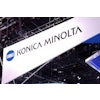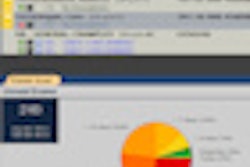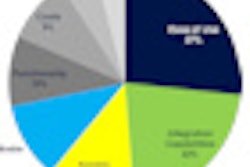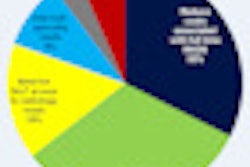Offering outside image reading services is a common activity among radiology practices, and as teleradiology capability continues to grow, this service is being provided more and more via the Internet, according to a new study in the November issue of the American Journal of Roentgenology (AJR).
Researchers at Yale University in New Haven, CT, and at the American College of Radiology (ACR) of Reston, VA, examined how many radiology practices perform outside readings, what might influence the frequency and volume of this service, and how practices were paid for outside readings, using data from an ACR 2007 survey to serve as a baseline measure (AJR, November 2010, Vol. 195:5, pp. 1159-1163).
Lead author Ryan Huffman and colleagues used data from ACR's 2007 survey of radiologists, which was a random-sample e-mail quota survey with telephone follow-up of ACR post-training, active members. The study included 480 survey responses (20% response rate), which were weighted to make them representative of U.S. radiology practices, the team wrote.
Practice types examined included solo, primarily academic, private multispecialty, government, and private radiology firms; practice size ranged from one to 10 to more than 30 members. The practices were located in various locations, including metropolitan areas, suburbs, and rural areas across the U.S.
The study found that overall, 40% of U.S. radiology practices performed outside readings in 2007. Of this, the mean fraction of a practice's workload represented by outside readings was 11%.
Huffman's team found variations in the percentage of practices that performed outside readings by type: 22% of academic practices performed the service, 2% of government practices, and 25% of private nonacademic multispecialty radiology practices.
How were practices paid for outside reads? In 48% of the cases, the client billed the technical component and the radiology practice billed the professional component. The second most common method of payment (41%) was for the radiology practice to garner a flat fee per study for the client, who then billed the global fee from the provider. Other methods of payment included:
- The client paid the radiology practice a percentage of the professional component it collected (11%).
- The client billed globally and paid the radiology practice a percentage of its total collections (3%).
Practices often used more than one method of payment, Huffman wrote.
The ACR survey's strengths include its reasonable size, the careful conduct of the survey, and the weighting process, according to Huffman. Its limits include a lower response rate than previous surveys, and the term "outside reading" was not defined explicitly, he team acknowledged. But in all, the data showed that outside reading service is a common one across radiology practices in the U.S.
"With teleradiology capabilities growing and nonradiologists' ownership of imaging equipment also growing, outside reading may well be expanding," the team wrote. "In any case, the increase in teleradiology capabilities probably means that outside reading is dispensing with physical movement of images recorded on film or CDs in favor of transmission of images via the Internet."
By Kate Madden Yee
AuntMinnie.com staff writer
October 22, 2010
Related Reading
Report: Remote radiology market is active, fragmented, September 14, 2010
Radiologist reports problems at Radisphere hospital, August 2, 2010
Are hospitals playing hardball with radiology groups? April 22, 2010
Radisphere skirts local groups in bid for hospital contracts, April 15, 2010
Imaging Advantage creates uproar with new business model, July 9, 2009
Copyright © 2010 AuntMinnie.com




















